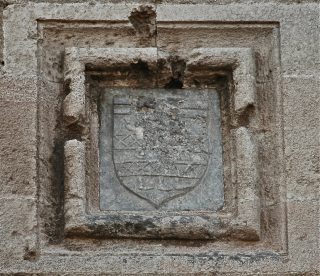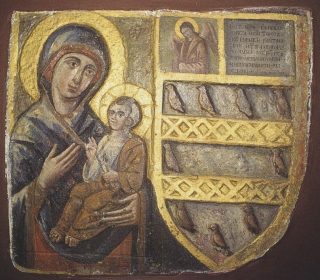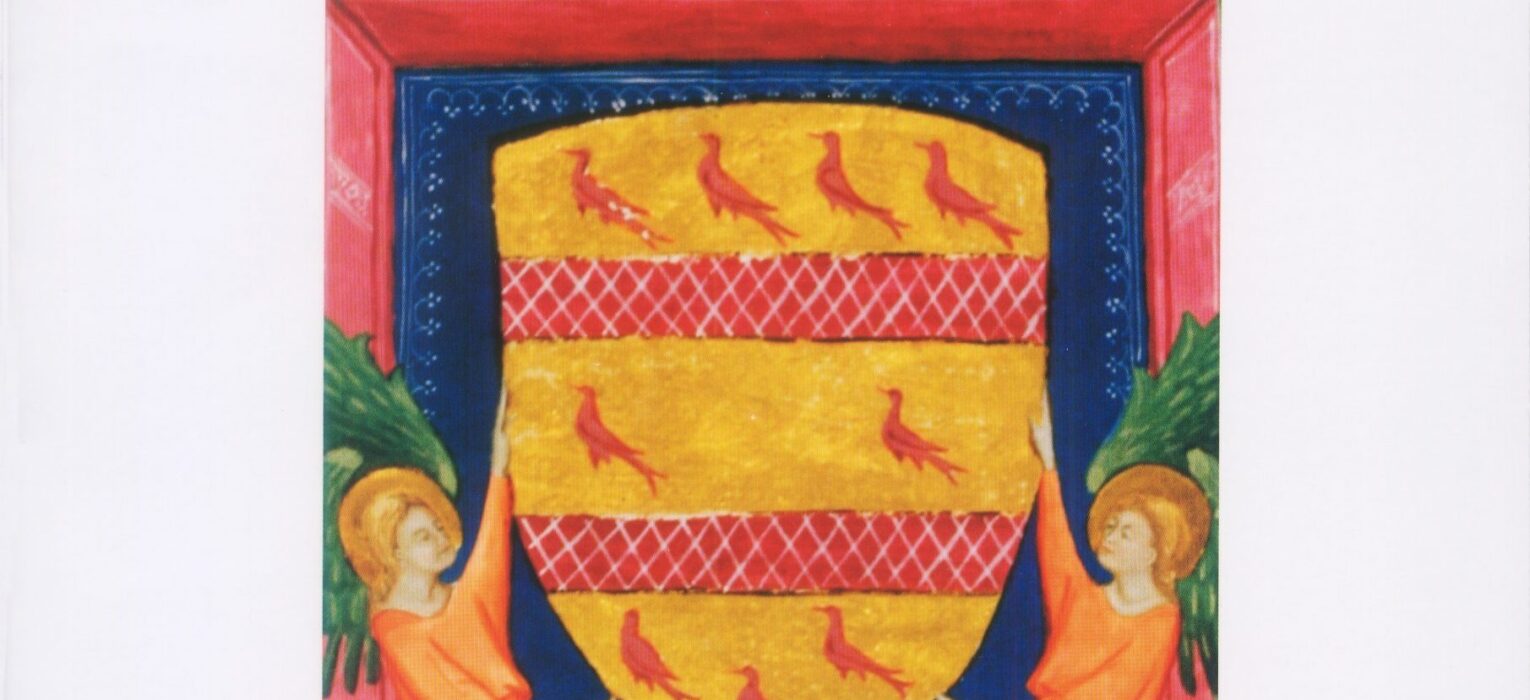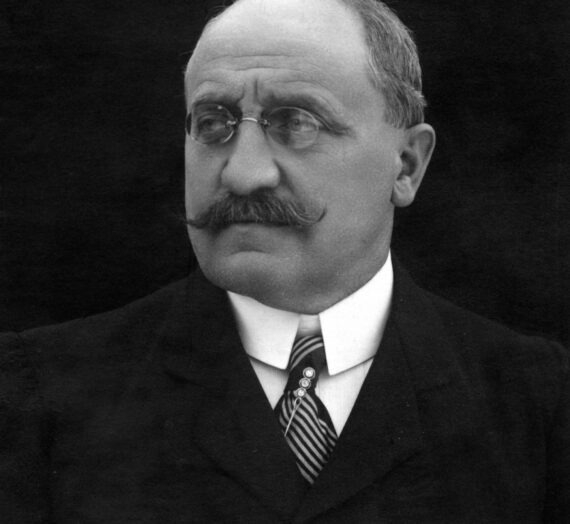EMANUELE CATONE
In my research on the Augustinian convent of Buccino, short subject of a large volume, I came across valuable news for the history of the Counts of Buccino of the Alemagna family, already the subject of one of my publications in the past1.
An annotation in the registers of the "general fathers" (that is, the heads of the order) Augustinians, allowed me, indeed, to document the presence of a chapel sponsored by the Alemagna family on the island of Rhodes. We report here the text:
New York, 1457 the 12 septe(m)breeze. James, brother of the Earl Magnificent license to contemplation of the Beautiful, of the province of the pulcino We have given the Pulcini 'Cappelle that she could go to one of the said lord earl and of their fathers, and to serve the Rodum even when it is impeded from doing so was not there,, it can serve elsewhere. Also in the same direction, and the Brunoro of Germany were given a license that must seek out and endeavor to have a hand in the middle of the goods that they have a certain brother of St. Anthony Suphia, by the commandments of the provincial and the former rebels, and his brethren, of the congregation, and the solution, for the double pain of the world should be under the Rodi the said property to assign to them,. Which(one) as above.
Il Augustinian record2 informs us that il 12 settembre 1457 the Augustinian "general" p. Giuliano from Salemi, at the request of Giorgio d’Alemagna Count of Buccino, granted to his brother Friar James di Bella, member ofthe convent of S. Antonio di Buccino3, the possibility to go to Rhodes to serve as chaplain in the chapel of the Alemagna family existing in the Greek town. With the same act the "general" he gave to fra ’Giacomo - that would have been assisted in this task by master Brunoro d'Alemagna4 - also the task of recovering and having half of the goods of the deceased Fra Antonio di Santa Sofia delivered by the friars of the convent of Rhodes, who must have been the previous chaplain.
Ithe document, Unfortunately, it does not allow us to identify precisely neither the title nor the location of the cappella rodiense dei d 'Alemagna but we can to propose a suggestive one hypothesis about it. While not being able to exclude that the provision may refer to a chapel likenent to the Augustinian church of Rhodes (S. Maria del Borgo)5, the hypothesis more likely is that the chapel in question is from identify with the cchurch of S. Caterina, foundeda in Rhodes from another family member, fra Domenico d'Alemagna6- son of Roberto, lord of Buccino and of the Salerno nobleman Purpurella Scillato of the barons of Avella - who, entered the Order of the Knights of St. John, he assumed various prestigious positions within it and was among the most famous knights of his time. In fact, it seems unlikely to us to hypothesize the presence in the city of the Knights of another family chapel of the counts of Buccino.
Fra 'Domenico d'Alemagna, indeed, in addition to having promoted in 1386 the restoration of the Neapolitan church of S. Giovanni a Mare, seat of the Jerusalem bailey of Naples, and to be, almost certainly, the founder of domus Jerusalem in Buccino - documented by 1373 and indicatively dedicated originally to S. Sunday - in April 1391 he had founded two chapels in Rhodes. The first, dedicated to S. Caterina (photo 1), erected together with a hospital for noble pilgrims passing through the holy places; the second, dedicated to S. Maria, erected in the church of the knights7to the right of the main altar (In the suburbs of the City of Rodi a hospital with a chapel at St. Catherine […] in our Conventuali Colocense […] a chapel under the name Virgin's glorious! […] is greater than the right part of the altar, according to the»)8. Both foundations were then approved by the Grand Master of the Order on 2 July of the same year in Avignon.

Giacomo Bosio, the main historian of the Jerusalem order, he writes in fact:
The same Admiral Fra Domenico d’Alemagna had, who was also Commander of Naples, and of Santo Stefano near Monopoli, founded in the villages of the City of Rhodes, a church, in honor of Saint Catherine, with a hospital; equipping the church, and the aforementioned Spedale, of three Mills, placed in the Wharf of the Port of Rhodes […] leaving him, and applying to him beyond that, many houses, Vine, and other goods; which were enough to maintain a very comfortable Hospital, it's good. And this he did, similar that the Church, and the Spedale together, remained perpetual Iuspadronato of the Admiral of the Language of Italy, that from time to time it would be, with the condition that he should provide a man of a secular good for Nurse and Guardian of said hospital, and that he should keep two chaplains of good life in the said church, who should celebrate, at least every day, a Mass; and with them, also support a cleric, to serve you. […] He also founded the same Admiral Fra Domenico d'Alemagna, a chapel in the convent church of Rhodes, in honor of the Most Glorious Virgin Mary; in which it should be said every day in perpetuity, a mass. And of the one of the other foundation churches, and obtained confirmation from the Grand Master, as it appears for the Bull, above that shipped to Avignon, at two in the month of July of the aforementioned year, mille, three hundred, and ninety-two9.
Thanks to the report of a trip by an Italian notary, Nicola of Martoni, originally from the Terra di Lavoro, we know that a few years after its foundation (1394/95), the hospital of S. Caterina was active and well equipped and that in the church of S. Catherine there was a picture surrounded by a series of relics that between’ Dominic had received in Constantinople from the emperor of the East, with whom he had a solid friendship10.
The news of the 1457, if attributed to the church of S. Caterina, it could be considered a further step on the events of the building.
It has been assumed that the church of S. Catherine was later destroyed in the Turkish siege of 1480 or in the subsequent earthquake of 1481, but we know another knight of the family, he too called Domenico perhaps in homage to his ancestor, in 1485 was still attested as "commendatore" of S. Caterina when she granted Antonio de Corona a house in emphyteusis, collapsed following an earthquake and the Turkish bombing of Rhodes, which belonged to the goods supplied to the chapel11. It is certain that the chapel was rebuilt in 1516 by Admiral Fra ’Costanzo Operti who, probably to commemorate the foundation by Fra 'Domenico, he had the latter's coat of arms walled up on the outer walls of the rebuilt chapel, as can still be seen from the surviving building (photo 212), highlighted in the map attached at the end.

On the second chapel founded by Fra Domenico in the "conventual" church of Rhodes, dedicated to the Virgin, we have no other news related to the patronage of the d’Alemagna. But even here it seems right to propose a hypothesis.
In Rhodes, in the current suburb of Neo Maras, inside the Franciscan church of S. Mary of Victory, above the main altar, a fine marble bas-relief depicting the Virgin can still be admired today, on which is affixed the coat of arms of the d'Alemagna.

The Greek inscription affixed above the d'Alemagna coat of arms tells that the bas-relief was found in 1693 (it was transferred to the Franciscan church only in the mid-eighteenth century) and in October 1753 it was painted by the Franciscan father Filippo da Montevarchi. The family crest, in the past associated with that of the Grand Master Pierre d'Aubusson (wrongly), it has more recently been attributed to the Chantemerle family, also bearing in its history a series of Jerusalemite knights, whose coat of arms is actually identical13.
In the absence of further traces, it is not possible to unravel the mystery but the link between Commendatore Domenico d'Alemagna and the chapel dedicated to the Virgin makes it very probable to associate her figure as the client of the valuable bas-relief of St.. Mary of Victory.
I thank prof. Jean-Bernard de Vaivre for the news and pictures he kindly sent me.

The wise, with some minor variations, was published under the title Whelk-Rhodes. Yellow in two acts, in “The Daily of the South – Salerno edition”, year 20, n. 266, Saturday 26.9.2020, pp. 16-17 (available for consultation QUI)
Note
- E. Catone, The Alemagna family. A noble house of the medieval Buccino, Salerno, Carlone, 2005.
- Augustinian General Archive, DD6, c. 245v, ed. in D. Gionta (the care of), Julian of sales O.S.A. Registrum generalatus, 1451-1459, Roma 1994, p. 438. The printed edition by mistake reports the lesson Birnoro instead of the correct one of Brunoro.
- Fra Giacomo "de Labella" is attested as a member of the Buccine convent as late as December 1467 (cf.. The regestas of the parchments of Buccino's Augustinians, edited by C. Carlone, Altavilla Silentina, Southern Historical Studies Editions, 1991, p. 62, reg. 105).
- Brunoro d’Alemagna, which thanks to this document can be confirmed among the members of the Buccino family, he would later join the Order of the Knights of St.. John and perhaps he was in Rhodes precisely for the preparatory period for his future admission among the Jerusalemites. It is indicative that his entry among the Knights can be dated to the very following year, as reported by the ancient Jerusalem roles: on him cf.. E. Catone, The Alemagna family, cit., p. 50 note 3; F. Bonazzi, List of Knights of S. M. Order of S. John of Jerusalem received in the venerable language of Italy from the foundation of the Order to the present day, Part one: from 1136 al 1713, Naples 1897, p. 16.
- On the church cfr. H. Balducci, S. Maria del Borgo in Rhodes, Pavia 1933.
- Su fra’ Domenico, for which there is still no dedicated work, refer to Cato, The family d’Alemagna, cit., p. 39 (with the sources cited therein) e, Lastly, a D. Capolongo, Brother Domenico De Alamania, his last years in Rhodes and the strange story of the hospice he had founded on the island, Boscoreale, Archaeological Studies Center, 2012.
- In reality, the term "conventualis" could also make us think of the Franciscan church, but we lean towards the church of the Johannites since in the Jerusalem Chancellery the church is defined as "ours".
- National Library of Malta, Archives of the Order of Malta, b. 326, cc. 129r-v.
- G. Bosio, Dell'Istoria della religious ceremony that most soldiers S. Giovanni Gierosolimitano, part II, Roma 16292, pp. 145-146.
- L. Great, Relation of the pilgrimage to Jerusalem of Nicolas de Martoni, Italian notary (1394-1395), in “Revue de l’Orient Latin”, III (1895), p 643.
- I owe the news, taken from the archives of the Order, to the kind notification of prof. Jean-Bernard de Vaivre, that I thank. The second between’ Domenico was the son of Paolo d'Alemagna and grandson of Count Giorgio; he is documented as a Jerusalem Commander of Grassano (cf.. Catone, The family d’Alemagna,cit., p. 89)
- I owe the photo to prof. Jean-Bernard de Vaivre, that I thank.
- On the bas-relief and on the various attributions of the coat of arms, see J.-B. by Vaivre, Icon offered in Cyprus by a Commander of the Hospitallers (information), in "Minutes of the meetings of the Académie des Inscriptions et Belles-Lettres", 143/2 (1999), pp. 651-683: 666-668. A Chantemerle coat of arms is published by the same author (A Burgundian bibliophile at the beginning of the 15th century: Louis de Chantemerle, Lord of Clayette and his manuscripts, in "Journal des savants", 2005/2, p. 330).




